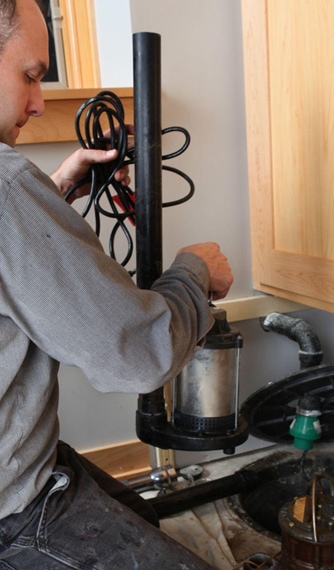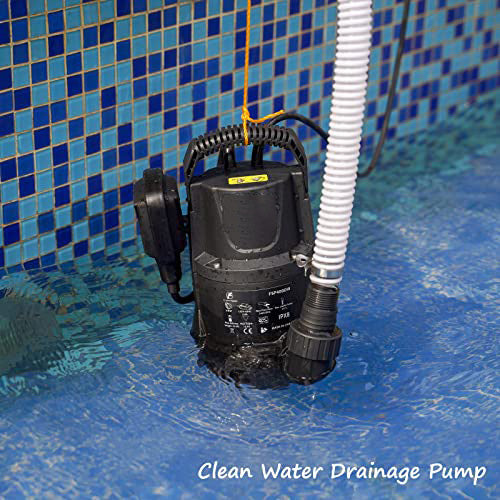Practical Techniques for Maintaining Your Sump Pump
Practical Techniques for Maintaining Your Sump Pump
Blog Article
What're your opinions with regards to How To Effectively Clean A Sump Pump?

Sump pumps are crucial parts in several homes, particularly in locations susceptible to flooding or too much wetness. They assist avoid water damages by successfully eliminating excess water from basements or crawl spaces. However, like any other appliance, sump pumps need routine maintenance to ensure they operate efficiently when required the most. Cleansing your sump pump is a vital part of its maintenance, and comprehending just how to do it correctly can conserve you from pricey repair work and potential disasters.
Introduction
Keeping a tidy sump pump is important for its proper functioning and durability. Neglecting this essential task can lead to obstructions, malfunctions, and inevitably, water damages to your residential property. For that reason, discovering how to clean a sump pump is important for house owners who rely on these gadgets to keep their cellars completely dry and secured.
Signs of a Dirty Sump Pump
Understanding when your sump pump needs cleansing is important for stopping possible malfunctions. Some usual signs that suggest a dirty sump pump include weird noises during procedure, lowered water circulation, and noticeable particles in the pit. If you discover any of these symptoms, it's necessary to clean your sump pump immediately to avoid any kind of additional concerns.
Preparing for Cleaning
Before you begin cleaning your sump pump, it's necessary to take some security preventative measures. Beginning by turning off the power to the pump to stay clear of any electrical crashes. Additionally, use proper safety equipment, such as gloves and goggles, to secure yourself from dirt, debris, and possible virus.
Recognizing the Sump Pump
Before diving into the cleaning procedure, it's vital to have a fundamental understanding of exactly how a sump pump functions. Typically mounted in a pit or basin listed below the cellar floor, a sump pump contains a number of essential parts, including a pump, a float button, and a discharge pipe. When water gathers in the pit, the float switch triggers the pump, which after that pumps the water out through the discharge pipe, far from the structure's foundation.
Step-by-step Overview to Cleansing a Sump Pump
Shutting Off the Power
Begin by detaching the power supply to the sump pump to avoid any kind of crashes while cleansing.
Looking For Proper Performance
Prior to re-installing the pump, execute a quick test to guarantee that the float switch activates the pump properly. Pour some water into the sump pit and observe the pump's operation. If everything is operating properly, you can rebuild the pump and reconnect the power supply.
Removing Debris and Dirt
Utilize a bucket or an inside story to remove any visible debris, dust, or debris from the sump pit. Dispose of the debris correctly to stop it from obstructing the pump or the discharge pipeline.
Cleaning the Pump and Float Change
Once the pit is free from particles, thoroughly get rid of the pump from the pit. Examine the pump and the float switch for any type of indicators of damage or wear. Make use of a soft brush or towel to cleanse the surfaces and eliminate any built up gunk.
Flushing the System
After cleansing the pump and float switch, flush the sump pit with clean water to get rid of any kind of remaining dirt or sediment. This will certainly aid ensure that the pump operates efficiently and efficiently.
Upkeep Tips to Maintain Your Sump Pump Clean
Along with routine cleansing, there are numerous upkeep ideas you can follow to keep your sump pump in ideal problem:
Conclusion
Cleaning your sump pump is an essential element of its maintenance and ensures that it runs successfully when you require it one of the most. By following the steps detailed in this guide and including regular maintenance right into your regimen, you can extend the lifespan of your sump pump and secure your home from water damages.
6 STEPS ON HOW TO CLEAN A SUMP PUMP PROPERLY
UNDERSTANDING SUMP PUMPS
Your sump pump plays a crucial role in protecting your home by managing and removing excess water. It primarily functions as a “shield”, guarding your basement against the damaging effects of water accumulation. The pump is housed in a sump pit in the lowest part of your basement, and its job is to pump out any water that collects there.
During heavy rainfalls or when snow melts rapidly, water can infiltrate your basement, posing potential risks like flooding, structural damage, and harmful mold growth. Here, the sump pump springs into action, pumping out the intruding water and directing it away from your home.
SAFETY FIRST
Before cleaning, remember to prioritize safety. Disconnect the sump pump from the power source to prevent any accidental electric shocks. Also, wear sturdy gloves to protect your hands from any sharp or dirty components within the pump.
REMOVE THE SUMP PUMP
After ensuring your safety, the next step is to remove the sump pump from its pit. Doing this might require careful maneuvering as you don’t want to damage any pump components. Once removed, clean the sump pit to remove any accumulated debris or sludge.
INSPECT THE PUMP
Inspect the pump for any visible signs of wear or damage. Check the power cord, float switch, and impeller housing. If any components look worn out or damaged, consider replacing them to ensure optimal performance.
CLEAN THE PUMP
Thoroughly clean the pump with warm, soapy water. Make sure to rid it of any dirt, gravel, or other debris that might impede its performance. You can use a toothbrush to clean the small, hard-to-reach parts of the pump.
REINSTALL THE SUMP PUMP
Reinstall the pump into the sump pit Make sure it’s positioned correctly to remove the water effectively Once it’s back in place, reconnect it to the power source TEST THE PUMP
Finally, pour some water into the pit to ensure the pump works correctly. It should start automatically and begin pumping out the water; if it doesn’t, check the power source and the positioning of the pump.
Remember, while cleaning your sump pump is an essential part of home maintenance, hiring a professional plumber for a thorough inspection and cleaning at least once a year is also important. This will ensure that your pump is in optimal condition, ready to protect your home from potential water damage.
BEST PRACTICES FOR CLEANING SUMP PUMP DISCHARGE PIPES
Regular Inspection: Regularly inspect your discharge pipes, especially during heavy rainfall or snowmelt periods. Look for any signs of blockage or damage. Early detection of problems can prevent serious issues down the line. Periodic Cleaning: Over time, sediment and debris can accumulate in the discharge pipes, impeding the flow of water. Regular cleaning helps keep the pipes clear and functioning efficiently. You can use a high-pressure water jet to effectively clean the pipes. Insulation During Winter: In colder climates, discharge pipes can freeze, blocking the outflow of water. Protect your discharge pipes from freezing temperatures by insulating them with foam pipe insulation. This will ensure the sump pump can continue to discharge water even in freezing conditions. Proper Positioning: The discharge pipe should be positioned to direct water away from your home’s foundation. Improper positioning can lead to water seeping back into the basement. Ensure the pipe is long enough and angled correctly. Installation of a Check Valve: A check valve prevents water from flowing back into your sump pit after the pump has pushed it out. Installing a check valve helps maintain the efficiency of your sump pump and reduces the risk of flooding. Minimize Pipe Turns: Every curve or turn in the discharge pipe can decrease the efficiency of water flow. By minimizing turns and bends in your discharge pipe, you can increase the efficiency of your sump pump. https://www.fullspeedplumbing.com/how-to-clean-a-sump-pump-properly9999/

I recently found that write up on How To Effectively Clean A Sump Pump while doing a search on the search engines. Sharing is good. You just don't know, you will be doing someone a favor. Thank-you for taking the time to read it.
Call Today Report this page